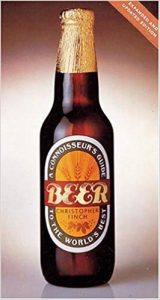The always-intriguing Don Peppers published an excellent piece on LinkedIn today about the new focus on customer experience, and why it took so long to get where we are. His thesis is that it all came from the marketing approach of Jerome McCarthy dating to 1958, which put the emphasis on “product, price, place, and promotion.” Do read the whole thing – it’s a compelling combination of “how we got here” and “how best to proceed.”
I’m going to expand a bit on this statement by Don: “In essence, the mass media and mass production technologies available in the 20th Century pushed companies into a supply-driven, mass marketing strategy,” and approach it from my specialty, manufacturing. I think a big driver for where we are with so little focus on the customer experience was driven by the industrial revolution, and especially the 20th century’s explosion of mass-produced consumer goods. Interestingly, I learned the best background for all this from a beer book – and it focused on bread to explain everything. Hang with me…
In their superb 1989 book Beer: A Connoisseur’s Guide to the World’s Best, Christopher Finch refrained from caustically dismissing American beer as so many beer critics at the time were apt to do. Instead, he explained how it made perfect sense when you looked at history. Back in the early 20th century, manufacturing technology had come to favor huge plants that did the same stuff day in, day out. Rather than explain directly how that affected beer, though, he used the analogy of bread, a product very closely related to beer. Just like beer, bread has countless different varieties and styles, and yet what was primarily available when Finch was writing? Plain white bread. He explained how that cake-like product was designed not to appeal to anyone in particular, but to offend as few people as possible. Rye? Pumpernickel? Soda bread? They’re all popular with some folks, but not with the masses. So it was that combination of burgeoning ability 100 years ago to pump out huge quantities of a given product, and the reality that to grow best with both the media and the production systems and the distribution channels available at the time, it made perfect sense to make a bland and uniform one-size-fits-all offering. And it worked, like gangbusters.
Same with beer. English bitter and German Kolsch and Belgian Lambec and Irish stout all took a backseat to the scarcely-hopped, over-carbonated plain old American lager, a watered-down, adjunct-y version of a perfectly refreshing offering from Pilsen, Czech Republic.
For beer specifically, there were other factors that played a part. Before Prohibition, there were countless local breweries around America, all making their own special versions of the many different styles of beer that had come here primarily from Europe. But only the biggest survived our experiment with making alcoholic beverages illegal – the big ones. So for beer in particular it became a double-whammy for the little guys – if they managed to survive Prohibition, they were killed off by the marketplace Zeitgeist. Still, you can look across the marketplace landscape and see numerous examples of similar products that became bland and less-than-satisfying thanks to the reality of 20th-century manufacturing.
So if you’re in one of those lagging industries still dominated by a bland central product, you should definitely read and internalize the great article by Mr. Peppers. Then you should also study what’s happened in the past couple decades with bread and beer. Hey, the big players are still around – but they’re losing market share steadily. And look at what all the little guys are doing, by focusing on the variety that we can now offer, and on the experience the customer has been screaming for all these years.

